
Meet Divo, the latest addition to the pygmy hippo family at Singapore Zoo.
A spokesperson from Singapore Zoo says:
"Say 'hello' to the Singapore Zoo's underwater ballerina!
"Latest addition to the pygmy hippo family at Singapore Zoo - a male baby named Divo born on 4 June 2009 seen in picture with mom, Minah. Weighing 6.2 kg at birth, Divo is the eighth successful birth for proud parents Mina and Babu.
"Found mostly along coastal and riverine systems within a small area of West Africa, pygmy hippo cannot swim as its body is too dense to float, instead it tiptoes along riverbeds gracefully, earning the title of "underwater ballerina of West Africa."
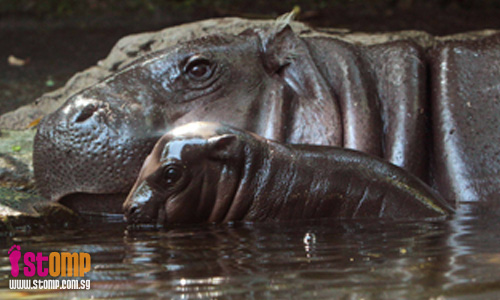
The pygmy hippopotamus (Hexaprotodon liberiensis) is currently endangered, so it's good news that the Singapore Zoo is doing its part to sustain the captive population. I was at the zoo recently, but I think I just missed the appearance of the baby, since I only saw 1 adult, while a family of visitors who had been there when I arrived were still talking about the baby and mother that had presumably just gone into the den to seek some privacy.
I'm particularly fond of this exhibit, as it features an underwater viewing gallery, where visitors can get an excellent view of the hippos as they gambol and frolic about in the water, accompanied by schools of African cichlids.
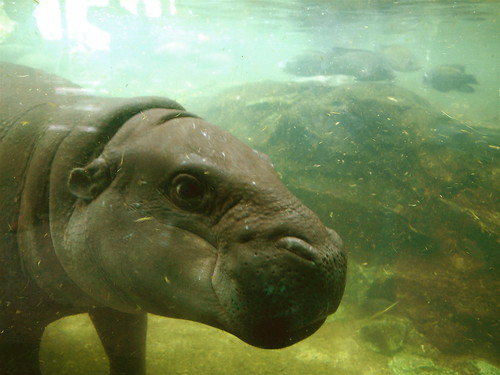
Pygmy hippo underwater, Singapore Zoo;
(Photo by mariellewagner)
The pygmy hippopotamus is a native of rivers and swamps of west Africa, in the dense rainforests of Liberia, Sierra Leone, Guinea, and Ivory Coast. A second population, thought to represent a second subspecies, was documented to live in the Niger River Delta, but most likely became extinct by the middle of the 20th century. The primary threats to its survival are habitat destruction, poaching for the bushmeat trade, and armed conflict. Less than 3,000 pygmy hippos are thought to remain in the wild, and the discovery that there were some still living in Sapo National Park in Liberia was a good sign that the hippos have managed to survive despite 2 civil wars, illegal logging, and poaching.

Pygmy hippo in the wild, Liberia;
(Photo from the EDGE blog)
Compared to the hippopotamus (Hippopotamus amphibius), the only other extant member of the Hippopotamidae, the pygmy hippo is tiny, less than half the size of its larger cousin, and weighing only about a quarter as much.

Life-size cutouts comparing size of hippopotamus and pygmy hippopotamus, Singapore Zoo;
(Photo by pink_emmie_bat)
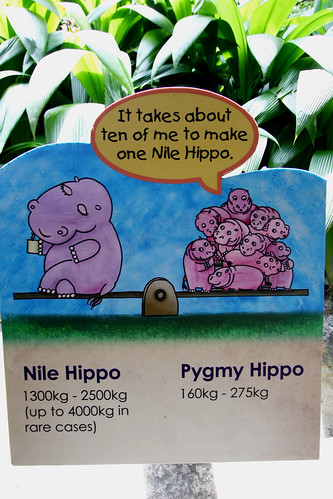
Graphic comparing weights of hippopotamus and pygmy hippopotamus, Singapore Zoo;
(Photo by iamgist)
Both species of hippo spend a lot of time in the water, but emerge at night to graze on land. The pygmy hippo is somewhat more terrestrial than the hippopotamus, and is largely solitary.

Pygmy hippo, Singapore Zoo;
(Photo by Amsk)
The hippopotamus (also known as the Nile hippo to avoid confusion with the pygmy hippo) has a wide distribution across much of sub-Saharan Africa; historically, it ranged all the way up to the mouth of the Nile, and during warmer periods of the Pleistocene, also inhabited north Africa and even parts of Europe. However, its range is now very much reduced due to hunting and loss of suitable habitat; hippos and humans don't get along very well. The stronghold for this species is in the network of parks and reserves found in east and southern Africa, where large herds can still be found in rivers and lakes.
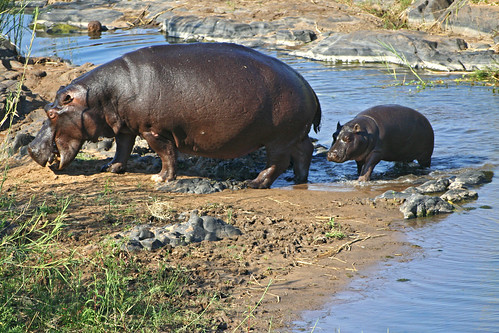
Hippopotamus, Kenya;
(Photo by Rob Inh00d)
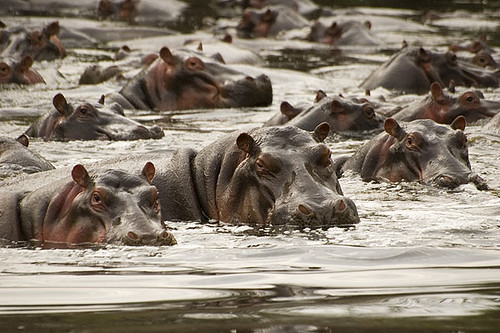
Hippopotamus herd, Tanzania;
(Photo by elosoenpersona)
It has to be emphasised that despite their comical appearance, hippos are certainly no laughing matter. Those tusks, which are used to resolve disputes between these massive ill-tempered herbivores, can do very serious damage. Territorial bulls and mothers with young calves are especially dangerous, especially to hapless people in flimsy little boats. This, combined with an irritable disposition and a willingness to charge at anything perceived to be a threat, makes the hippopotamus one of Africa's deadliest animals.

Hippopotamus fighting, Kenya;
(Photo by Jayanand)

Hippopotamus yawning, Tanzania;
(Photo by Alejandro Tawil)
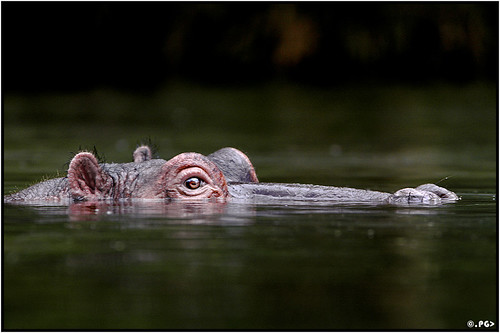
Hippopotamus, Kenya;
(Photo by Edgar Thissen)
Several other species of hippopotamus are known to have lived during the Pleistocene and early Holocene; these included 4 species of hippo on several islands of the Mediterranean, as well as 3 species on Madagascar. These island species appear to have become dwarves as a result of insular dwarfism. It is likely that humans encountered many of these species, although it is unknown whether hunting contributed to the eventual extinction of these island forms.
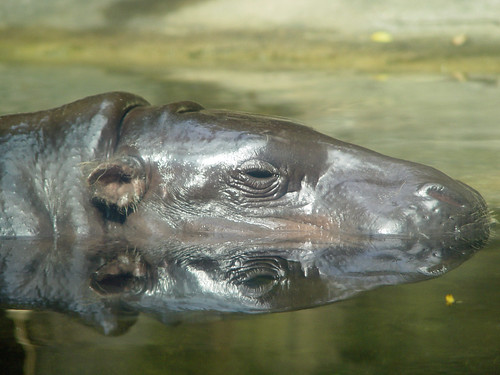
Pygmy hippo, Singapore Zoo;
(Photo by Peter Garnhum)
More information about the pygmy hippo is available here at the EDGE of Existence site, with blog updates about measures to learn more about the pygmy hippo in the wild.